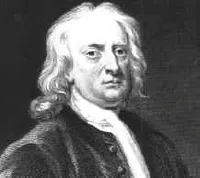
eBook - ePub
Undergraduate Convexity
From Fourier and Motzkin to Kuhn and Tucker
Niels Lauritzen
This is a test
Condividi libro
- 300 pagine
- English
- ePUB (disponibile sull'app)
- Disponibile su iOS e Android
eBook - ePub
Undergraduate Convexity
From Fourier and Motzkin to Kuhn and Tucker
Niels Lauritzen
Dettagli del libro
Anteprima del libro
Indice dei contenuti
Citazioni
Informazioni sul libro
Based on undergraduate teaching to students in computer science, economics and mathematics at Aarhus University, this is an elementary introduction to convex sets and convex functions with emphasis on concrete computations and examples.
Starting from linear inequalities and Fourier–Motzkin elimination, the theory is developed by introducing polyhedra, the double description method and the simplex algorithm, closed convex subsets, convex functions of one and several variables ending with a chapter on convex optimization with the Karush–Kuhn–Tucker conditions, duality and an interior point algorithm.
Contents:
- Fourier–Motzkin Elimination
- Affine Subspaces
- Convex Subsets
- Polyhedra
- Computations with Polyhedra
- Closed Convex Subsets and Separating Hyperplanes
- Convex Functions
- Differentiable Functions of Several Variables
- Convex Functions of Several Variables
- Convex Optimization
- Appendices:
- Analysis
- Linear (In)dependence and the Rank of a Matrix
Readership: Undergraduates focusing on convexity and optimization.
Domande frequenti
Come faccio ad annullare l'abbonamento?
È semplicissimo: basta accedere alla sezione Account nelle Impostazioni e cliccare su "Annulla abbonamento". Dopo la cancellazione, l'abbonamento rimarrà attivo per il periodo rimanente già pagato. Per maggiori informazioni, clicca qui
È possibile scaricare libri? Se sì, come?
Al momento è possibile scaricare tramite l'app tutti i nostri libri ePub mobile-friendly. Anche la maggior parte dei nostri PDF è scaricabile e stiamo lavorando per rendere disponibile quanto prima il download di tutti gli altri file. Per maggiori informazioni, clicca qui
Che differenza c'è tra i piani?
Entrambi i piani ti danno accesso illimitato alla libreria e a tutte le funzionalità di Perlego. Le uniche differenze sono il prezzo e il periodo di abbonamento: con il piano annuale risparmierai circa il 30% rispetto a 12 rate con quello mensile.
Cos'è Perlego?
Perlego è un servizio di abbonamento a testi accademici, che ti permette di accedere a un'intera libreria online a un prezzo inferiore rispetto a quello che pagheresti per acquistare un singolo libro al mese. Con oltre 1 milione di testi suddivisi in più di 1.000 categorie, troverai sicuramente ciò che fa per te! Per maggiori informazioni, clicca qui.
Perlego supporta la sintesi vocale?
Cerca l'icona Sintesi vocale nel prossimo libro che leggerai per verificare se è possibile riprodurre l'audio. Questo strumento permette di leggere il testo a voce alta, evidenziandolo man mano che la lettura procede. Puoi aumentare o diminuire la velocità della sintesi vocale, oppure sospendere la riproduzione. Per maggiori informazioni, clicca qui.
Undergraduate Convexity è disponibile online in formato PDF/ePub?
Sì, puoi accedere a Undergraduate Convexity di Niels Lauritzen in formato PDF e/o ePub, così come ad altri libri molto apprezzati nelle sezioni relative a Mathematik e Angewandte Mathematik. Scopri oltre 1 milione di libri disponibili nel nostro catalogo.
Informazioni
Argomento
MathematikCategoria
Angewandte MathematikChapter 1
Fourier-Motzkin elimination
You probably agree that it is easy to solve the equation

This is an example of a linear equation in one variable having the unique solution x = 2. Perhaps you will be surprised to learn, that there is essentially no difference between solving a simple equation like (1.1) and the more complicated system

of linear equations in x, y and z. Using the first equation 2x + y + z = 7 we solve for x and get

This may be substituted into the remaining two equations in (1.2) and we get the simpler system

of linear equations in y and z. Again using the first equation in this system we get

ending up with the simple equation 8z = 24. This is an equation of the type in (1.1) giving z = 3. Now z = 3 gives y = 2 using (1.4). Finally y = 2 and z = 3 gives x = 1 using (1.3).

Figure 1.1: Isaac Newton (1642–1727). English mathematician.
Solving a seemingly complicated system of linear equations like (1.2) is really no more difficult than solving the simple equation (1.1). One of the world's greatest scientists, Isaac Newton, found it worthwhile to record this method in 1720 with the words
And you are to know, that by each Æquation one unknown Quantity may be taken away, and consequently, when there are as many Æquations and unknown Quantities, all at length may be reduc'd into one, in which there shall be only one Quantity unknown.

Figure 1.2: Carl Friedrich Gauss (1777–1855). German mathematician.
During the computation of the orbit of the asteroid Pallas around 1810, Gauss encountered the need for solving linear equations related to his famous least squares method. If you spend a little time deciphering the Latin in Gauss's original writings (see Figure 1.3), you will see how elimination appears naturally towards the end of the page. In spite of Newton's explicit ...